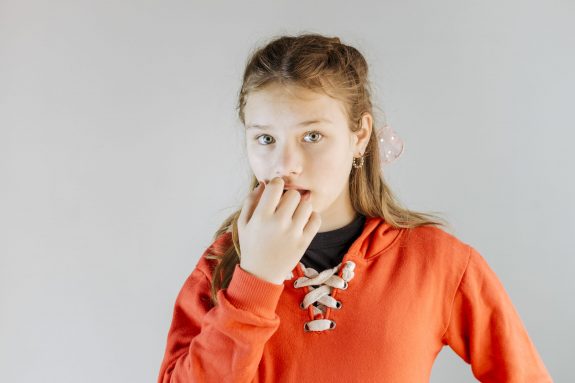ANXIETY
Anxiety in children may manifest in various ways. Children may be afraid of separating from their parents, be fearful of the dark, monsters, thunderstorms, or be shy.
Adolescents may experience anxiety about physical appearance, coping with school assignments, or friendships. In most cases, the tension resolves naturally as the child or adolescent matures.
However, how do I know if my child is anxious and needs help?
Many symptoms of anxiety are similar to those of depression. Parents tend to see these symptoms as not tolerated behaviors requiring punishment. Furthermore, parents can easily miss signs because many of the symptoms displayed seem not age-appropriate.
We at Healthy Connections look at variables such as appropriate worries, fears, and responses to stressors to determine factors maintaining anxiety.
Signs and symptoms of anxiety in children and teens include:
- Irritability or angry outburst
- Refusing to go to school
- Tantrums before going to school about hair, shoes, or clothing.
- Tantrums after school about homework
- Difficulty settling down for bed and falling asleep
- Fear of being around other people
- Extreme fear of being separated from parents
- Afraid that bad things are happening in the future
- Changes in sleep
- Verbal outbursts
- Frequent crying episodes
- Difficulty concentrating
- Agitation
- Restlessness
- Inattention, poor focus
- Somatic complaints such as headaches or stomach aches
- Irrational high expectations for schoolwork or sports.
Even though anxiety can be a severe illness, it becomes easily treatable when given proven tools.
We at Healthy Connections look at variables such as worries, fears, and responses to stressors to determine factors maintaining anxiety. Parents are instrumental in the family’s well-being. We believe that they can assist and equip their children to manage their emotions in many instances.
The earlier you provide your children with guidance, the easier it will be for you, and the better for any young person.
Triumph Steps is a proven program that helps your child understand the connection between thoughts and emotions. This understanding gives children self-ownership to develop new thought patterns that can lead them to happiness and peace.




